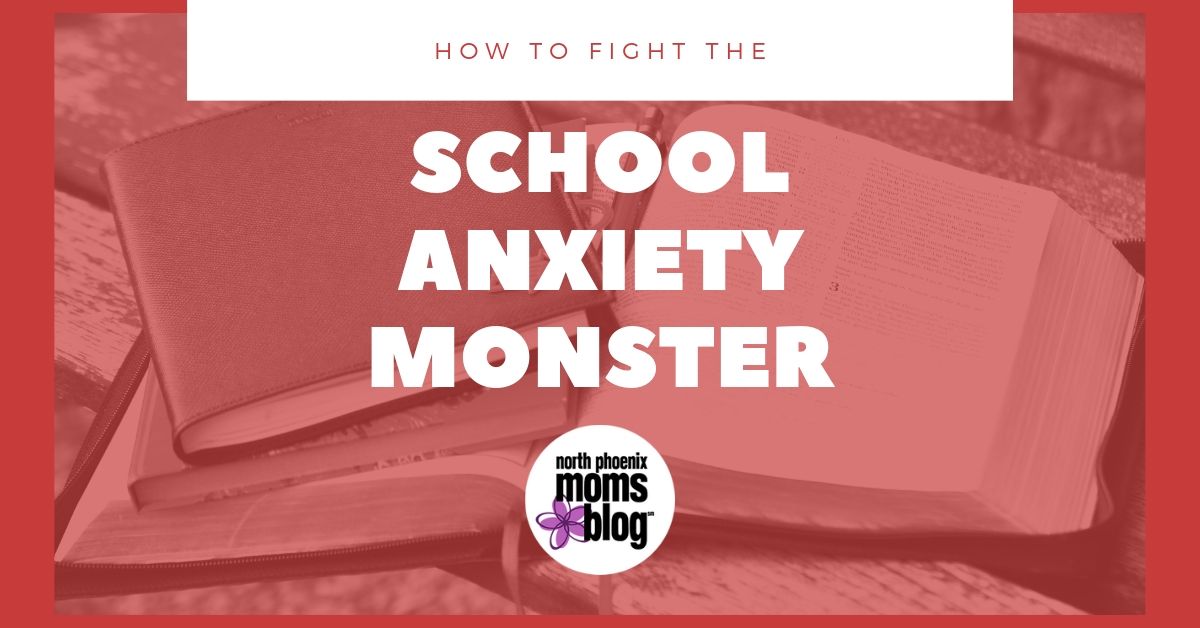For a lot of kids, the final weeks of summer mean anticipating new school clothes, learning about future teachers and looking forward to catching up with last year’s school friends. But for others, the transition back to the classroom isn’t quite as smooth. The “unexpected” that lies ahead (sometimes coupled with a previous year’s unpleasant experience), can lead to heightened feelings of school anxiety rather than excitement.
What School Anxiety Looks Like
Most of the time when we think about “anxiety,” we think about behaviors of “avoidance.” This may be your child telling you that they don’t want to go to school or that they are worried about a specific part of school (ie. riding the bus, a specific subject, certain classmates). Anxiety may also cause moodiness, unpredictable behavior, and irrational worries.
An often over-looked symptom of anxiety that I see in my young clients is the physical impact of anxiety. These signs include stomach aches, headaches, bowel disturbances and nausea. If your child is complaining of physical symptoms, take them seriously. Take them to the pediatrician to rule out additional causes.
If the doctor confirms anxiety is the likely culprit, help your child to recognize these physical anxiety cues. Remember that this is the body’s way of reminding a person to take care of their brain! By reducing anxiety through better coping strategies, the physical symptoms should subside.
Setting Your Child Up For Stress-Less School Success
1) Do Your Homework
Everyone feels more prepared for class when they do their homework, right? Take time with your child to scout out the classroom, meet their teachers and review course materials before school starts. Don’t miss orientation and make sure that you’ve gathered all necessary items on the school supply list early to avoid any mishaps.
2) Meet & Greet
Kids need familiarity. If you know that your child gets anxious in new situations, plan to tour the school and schedule introductions with key campus players. This might include people like the nurse, guidance counselor, principal, crossing guard or cafeteria workers so that your child has familiar faces on campus. You may also use this time to let the nurse or counselor know that your child is nervous about starting the school year and they can help to normalize your child’s feelings.
3) Gather Friends
Feelings of isolation often compound school anxiety. You may want to coordinate connections with other children who will be in your child’s class or grade to help ease the transition. If you have the time and energy, an end-of-the-summer pizza party can be a fun way to recharge school momentum. However, if your child tends to shy away from large gatherings, a simple affair with a close friend or two can elicit the same excitement.
4) Address The Anxiety Monster
Anxiety creates avoidance. This is understandable. In the short term, when we avoid something, it makes us feel better. But as I explain to parents and their children, eventually we need to face the problem head-on. If we don’t, continued avoidance actually makes anxiety stronger.
ACTIVITY: Giving their anxiety a name and a face is a great way to help children address their school anxiety. One of my favorite activities is to have clients draw a picture or representation of what the “worry” would look like. Oftentimes it looks like a monster or villain because anxiety and stress can be scary.
After your child draws “The Worry Monster,” have them write down what the worry monster says. If the issue is related to school anxiety, the worry monster may be saying things like, “You won’t have friends,” “You’ll miss your mom” or “It’s going to be too hard.”
Now that you and your child know what The Worry Monster is saying, you can start to fight it. Have your child draw their own superhero that will fight against their anxiety monster. How can the superhero respond to the monster’s threats and begin to take it’s power away? Are there real-world solutions to some of the monster’s comments? Can your child identify any flaws in the monster’s thinking?
The power in the activity is creating emotional distance between your child and their anxiety. By transferring the anxiety on the “monster,” your child can more concretely see how the “monster” is “tricking” them. For a great children’s book on this topic, I recommend What To Do When You Worry Too Much.
5) Take Note
Parents may notice that the anxiety increases and reaches its peak just before school starts. This is often referred to as “anticipatory anxiety.” This is the time with the most unanswered questions and unknowns. For most people with anxiety, once the situation at-hand happens, the anxiety decreases significantly. You should notice a steady decline over the first few weeks of school, but be prepared for spikes after prolonged breaks or absences, or during moments of increased stress. If you are diligent in identifying these patterns you will be in a better position to plan for them in the future and understand the course that they are most likely to take.
And remember: Your job as the parent is to reflect what you hope to see in your child. If your emotions are elevated, chances are your child will feel more elevated as well. Take a few deep breaths, which is shown to reduce anxiety in and of itself, and keep in mind that the most important way you may help your child is by helping yourself.













